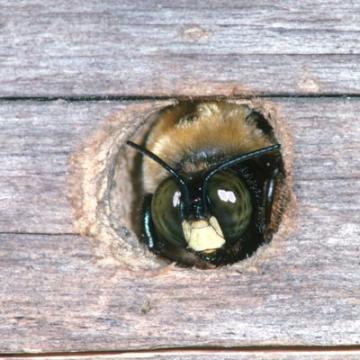How to Deal with Bees and Other Stinging Insects
Get the scoop on those winged stingers around your home-and learn how to get them to buzz off! -Keith Pandolfi, This Old House magazine
Honeybees: What They Do
Docile honeybees are essential pollinators in gardens. They nest in protected areas, like tree cavities, or within attics or walls. If aggravated, they'll sting just once; their barbed stingers rip off, killing them. (Their fatter, fuzzier bumblebee cousins can repeatedly inflict a painful sting.)
See here how to reduce your risk
MORE: Dealing with Household Disasters
Carpenter Bees: What They Do
Known for their ability to bore perfectly round holes into wood, they're often found
in eaves and beneath decks. As females build the nest, males flit about looking menacing, but, surprisingly, they can't sting. And while females can, they rarely do.
See here how to reduce your risk
MORE: Easy First Aid for Household Injuries
Yellow Jackets: What They Do
These territorial, aggressive predators feed on caterpillars, spiders, and even other bees, plus sugary carbs, which is why you see them around trash cans and backyard barbecues. They tend to build nests in small crevices in the ground.
See here how to reduce your risk
MORE: 9 Deadliest Wildlife Home Invaders
Hornets: What They Do
Like yellow jackets, hornets are in the wasp family and survive on other insects and food scraps. Their large papery nests are often found in trees and under eaves. They're extremely aggressive but are more likely to sting you when you're feasting on a food they like.
See here how to reduce your risk
See more information on stinging insects on thisoldhouse.com




